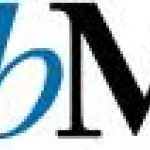- Settore: Health care
- Number of terms: 3413
- Number of blossaries: 0
- Company Profile:
WebMD is an online provider of health information and services for both consumers and healthcare professionals.
WPW is a form of supraventricular tachycardia (fast heart rate originating above the ventricles). People with WPW have more than one electrical conduction pathway in their hearts (accessory pathways. ) These electrical impulses set up a short circuit causing the heart to beat rapidly and conduct impulses in both directions. The impulses travel through the extra pathway (short cut) as well as the normal AV-His-Purkinje system. The impulses can travel around the heart very quickly, in a circular pattern, causing the heart to beat unusually fast. This type of arrhythmia is called re-entry tachycardia.
Industry:Health care
Some studies show that vitamins (A, C, and E) may help to limit the cellular damage caused by free radicals (which are released when tissue is being injured, such as during the progression of heart disease).
Industry:Health care
A procedure used to clean out clogged heart arteries. A specially designed balloon catheter with a small balloon tip is guided to the point of narrowing in the artery. Once in place, the balloon is inflated to compress the fatty matter into the artery wall and stretch the artery open to increase blood flow to the heart.
Industry:Health care
The force exerted in the arteries by blood as it circulates. It is divided into systolic (when the heart contracts) and diastolic (when the heart is filling) pressures.
Industry:Health care
A procedure that combines echocardiography with exercise to evaluate the heart's function at rest and with exertion. Echocardiography is an imaging procedure that creates a picture of the heart's movement, valves, and chambers using high-frequency sound waves that come from a hand held wand placed on your chest. Echo is often combined with Doppler ultrasound and color Doppler to evaluate blood flow across the heart's valves.
Industry:Health care
Small capillary-like branches of an artery that form over time in response to narrowed coronary arteries. The collaterals "bypass" the area of narrowing and help to restore blood flow. However, during times of increased exertion, the collaterals may not be able to supply enough oxygen-rich blood to the heart muscle.
Industry:Health care
The upper chambers of the heart. (Atrium refers to one chamber of the heart).
Industry:Health care
A stroke-like event lasting minutes, or hours, that occurs when the brain is deprived of oxygen-rich blood but in which the effects wear off completely after resumption of blood flow.
Industry:Health care
In people who require heart valve replacement surgery, it is sometimes desirable to implant a mechanical valve. A mechanical valve is made of artificial parts and functions similarly to a normal heart valve. People who have a mechanical valve implanted must take blood thinners lifelong to prevent blood clots from forming on the mechanical valve.
Industry:Health care
An amino acid in the body. High levels of homocysteine are a risk factor for coronary artery disease.
Industry:Health care
